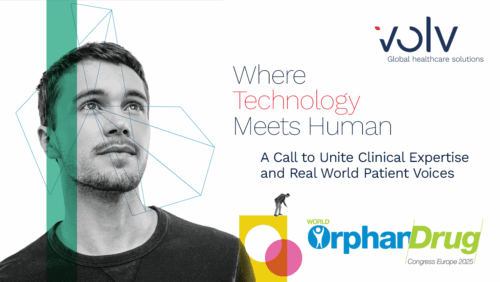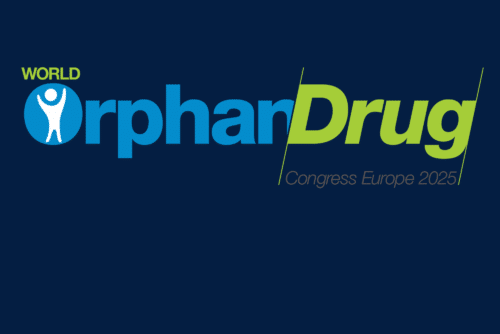By Léon Van Wouwe, Clinical Innovation Director, Volv Global
Introduction
For decades, Type 1 Diabetes (T1D) has been managed reactively, diagnosed only once symptoms appear. And often, only at a crisis point, marked by diabetic ketoacidosis or severe hyperglycaemia. While insulin therapy has saved millions of lives, it has never addressed the underlying autoimmune destruction of pancreatic beta cells.
Today, however, the field is on the cusp of transformation. Vertex’s investigational islet cell replacement therapy, zimislecel (VX-880), is demonstrating promising clinical results in restoring endogenous insulin production in patients with advanced disease [6,7]. Sanofi’s teplizumab (TZield) has become the first FDA-approved therapy to delay the onset of T1D in high-risk individuals [1,2]. Meanwhile, digital innovations ranging from continuous glucose monitors to closed-loop insulin delivery systems, continue to refine disease management.
Yet these advances face a common barrier: our current diagnostic and patient-finding infrastructure is not designed to identify individuals until after substantial, and often irreversible, beta-cell destruction has occurred. If diagnosis does not evolve to match innovation, health systems risk delivering breakthrough therapies to only a narrow subset of patients, leaving their broader potential untapped.
The Diagnostic Bottleneck in Type 1 Diabetes
The autoimmune attack on beta cells begins before symptoms emerge. And researchers have long known that the presence of multiple autoantibodies signals a near certainty of progression [9]. Yet T1D progresses silently for years, long before patients present in a clinic. And outside of research cohorts such as TrialNet, broad screening for at-risk individuals is rare.
This diagnostic lag has several knock-on effects:
- Clinical development is constrained to advanced disease. Trials like those for VX-880 often enrol patients with impaired awareness of hypoglycaemia or severe disease because these are the individuals who come to medical attention [6,7].
- Early-stage recruitment is slow and fragmented. Teplizumab demonstrated the feasibility of delaying disease onset in high-risk individuals, but recruiting such patients remains a major operational challenge given the lack of routine screening [3,5].
- Regulatory expansion and access are delayed. Without evidence in early or pre-symptomatic populations, regulators hesitate to broaden labels, and payers struggle to justify coverage [9].
The result is a vicious cycle in which therapies reach only those already living with significant disease burden, while the promise of prevention and early intervention remains under-realised.
Innovation Outpaces Infrastructure
The therapeutic landscape is diversifying rapidly.
- Cell-based therapies: Vertex’s VX-880 and other stem cell-derived islet programs are showing that durable insulin production can be restored, potentially reducing or eliminating insulin dependence. The FDA has granted VX-880 Regenerative Medicine Advanced Therapy (RMAT) and Fast Track designations in the U.S., and PRIME designation in Europe [6].
- Immunomodulatory therapies: Sanofi’s teplizumab, approved in 2022, is the first therapy to delay T1D onset, marking a regulatory milestone and creating a new therapeutic category [1,2]. In clinical trials, it delayed progression to Stage 3 T1D by a median of approximately two years compared to placebo [2,3].
- Advanced technologies: Closed-loop insulin delivery and digital glucose monitoring continue to improve the lives of patients already diagnosed, reducing the burden of daily disease management.
Despite these breakthroughs, for real impact at scale, they all depend on earlier detection. Preserving beta-cell function or halting disease progression requires patients to be identified while they are still asymptomatic or in early stages of autoimmunity. Without infrastructure to find such patients, medicinal innovation will continue to outpace implementation, and the full therapeutic benefits will not be reached.
What Needs to Change
To bridge the gap, both health systems and industry must commit to structural shifts.
First, screening must become proactive rather than reactive. Autoantibody and genetic testing should be integrated into care pathways for at-risk populations, such as first-degree relatives of T1D patients. Programs like TrialNet have proven feasibility, but uptake remains limited without payer support or systematic national initiatives [9].
Second, diagnosis must be reframed as a dynamic continuum rather than a static event. Risk of progression varies across individuals and changes over time. Longitudinal monitoring – combining lab tests, biomarkers, and digital signals – would enable a more precise understanding of when interventions should occur.
Third, data silos must be broken down. Currently, risk data is fragmented between endocrinology specialists, research registries, and primary care systems. Integration of electronic health records, laboratory databases, and digital health platforms could allow for population-level surveillance and targeted intervention.
Together, these changes would transform the diagnostic paradigm from one of late recognition to early, proactive identification – unlocking the true potential of emerging therapies.
How AI Can Bridge the Gap
Artificial intelligence is uniquely positioned to accelerate this transformation. By analysing vast, heterogeneous datasets – including electronic health records, laboratory trends, and prescription histories – AI models can identify subtle, early signals of T1D risk that clinicians alone cannot easily detect.
At Volv Global, we have developed AI-driven algorithms capable of stratifying individuals at high risk of progressing to T1D, even before symptoms emerge. Applied within health systems, this technology could help create a digital “safety net” to surface high-risk individuals for screening and monitoring.
For clinical development, this translates into faster enrolment for early-stage trials, enabling sponsors like Vertex and Sanofi to generate pivotal evidence in populations that matter most for long-term impact [6–8]. For regulators and payers, it provides the real-world data needed to justify broader labels and reimbursement for preventive interventions [1,2,9]. And for health systems, it creates readiness: the ability to identify and engage patients as soon as new therapies are available, ensuring that access is not restricted to those already severely affected.
One can imagine regional pilots where health systems deploy AI models to monitor populations, integrated with lab networks and primary care. Individuals flagged as high risk could then be invited for confirmatory autoantibody testing and, where appropriate, enrolment into preventive trials or early treatment programs. This type of digital-first, proactive infrastructure is precisely what will allow innovation in T1D to scale beyond narrow patient subgroups.
Conclusion
The science of T1D is advancing faster than ever before. Vertex’s cell-based therapies, Sanofi’s immunomodulators, and the steady evolution of digital health technologies are reshaping the therapeutic horizon. Yet unless diagnosis evolves in parallel, these innovations will remain confined to a fraction of patients.
The future of T1D care depends not only on what science can deliver, but on whether health systems can identify patients early enough to benefit. That will require a paradigm shift – from reactive diagnosis to proactive, AI-enabled patient finding and monitoring.
By aligning diagnostic infrastructure with therapeutic innovation, we can unlock the full promise of this new era: preventing or delaying disease, restoring insulin production, and ultimately transforming what it means to live with – or avoid – Type 1 Diabetes.
About the author
Léon van Wouwe has 20+ years’ global experience in clinical development and operations, uniting data science with pharma and research. He drives cross-functional collaboration to advance innovative treatments.
References
- U.S. Food & Drug Administration. (2022). FDA approves first drug that can delay onset of type 1 diabetes. [Press release].
- Sanofi. (2022, November 17). TZIELD™ (teplizumab-mzwv) approved by FDA as the first and only treatment indicated to delay the onset of Stage 3 type 1 diabetes (T1D) in adult and pediatric patients aged 8 years and older with Stage 2 T1D. [Press release].
- Diabetes UK. (2022). First treatment to delay type 1 diabetes (teplizumab) licensed in the US.
- Herold, K. C., Bundy, B. N., Long, S. A., et al. (2019). Teplizumab (anti-CD3 mAb) treatment preserves C-peptide responses in new-onset type 1 diabetes: 2-year results from a randomized controlled trial. Diabetes Care, 42(10), 1986–1993. doi:10.2337/dc19-0508
- National Institute of Allergy and Infectious Diseases (NIAID). (2022). Drug delays type 1 diabetes onset.
- Vertex Pharmaceuticals. (2023, June 24). Vertex announces positive results from ongoing Phase 1/2 study of VX-880 in type 1 diabetes. [Press release].
- Vertex Pharmaceuticals. (2023, September 30). Vertex presents positive, updated VX-880 results from ongoing Phase 1/2 study in type 1 diabetes at the EASD Annual Meeting. [Company presentation summary].
- American Diabetes Association & Vertex. (2024, June). Vertex expands VX-880 trial to approximately 37 participants to support regulatory filing. [Press release].
- Diabetes Journals (ADA Clinical Diabetes). (2023). Teplizumab: The first treatment to delay the progression of type 1 diabetes. Clinical Diabetes, 41(3), 474–483. doi:10.2337/cd23-0016
Links:
Photo by Maca and Naca on iStock.










